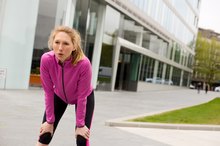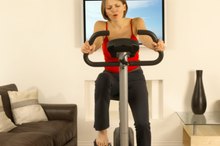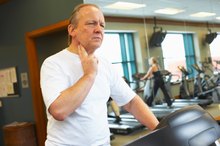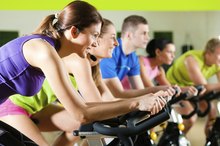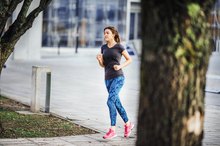What Happens to the Breathing System When We Exercise?
Introduction
Though the process of respiration is quite complex, in basic terms, it is process of exchanging carbon dioxide for oxygen. The respiration rate is the number of breaths taken per minute. The way the respiratory system responds to exercise will vary from person to person, and also by the activity being performed. Other factors, including cardiovascular fitness, current health status, age and even gender, affect respiration rate both at rest and during exercise.
- Though the process of respiration is quite complex, in basic terms, it is process of exchanging carbon dioxide for oxygen.
- Other factors, including cardiovascular fitness, current health status, age and even gender, affect respiration rate both at rest and during exercise.
At Rest
How Does Exercise Affect Breathing?
Learn More
At rest, the diaphragm and the intercostal muscles (muscles between the ribs) contract and expand with each breath. Every breath expands and contracts the thoracic cavity, which is the space between the ribs and the spinal column. During inhalation, the volume of the thoracic cavity increases as air flows into the lungs. When the air is expelled, the volume decreases as air is forced out of the lungs. With every breath, air is moved into the lungs and oxygen and carbon dioxide are exchanged. Oxygen gets carried away on the red blood cells, and carbon dioxide is expelled into the air. The exchange of these two gases takes place without much fanfare when the body is at rest. When the need for oxygen increases during exercise however, the rate of respiration can change dramatically.
- At rest, the diaphragm and the intercostal muscles (muscles between the ribs) contract and expand with each breath.
- When the air is expelled, the volume decreases as air is forced out of the lungs.
During Exercise
As exercise intensifies and the body’s need for fresh oxygen increases, the ventilation rate responds accordingly. The metabolic byproducts of exercise build up as a result of cellular respiration, and the amount of carbon dioxide (CO2) in the system also increases to act as a buffer against these acidic byproducts. As the concentration of CO2 increases, the body responds by breathing deeper, and more frequently to dispel the CO2. Working muscles also require fresh oxygen. The rate of respiration also increases to facilitate the delivery of oxygen to the blood stream, where it is then transported to the working muscles.
- As exercise intensifies and the body’s need for fresh oxygen increases, the ventilation rate responds accordingly.
- The rate of respiration also increases to facilitate the delivery of oxygen to the blood stream, where it is then transported to the working muscles.
Long-Term Improvements
How Does Running Increase Lung Capacity?
Learn More
With continued endurance training, the body becomes more efficient at using oxygen, as well as ridding the body of metabolic byproducts. Working muscles become more proficient at extracting fresh oxygen from blood. The pulmonary system also adapts and improves its ability to transfer oxygen from the air to the blood stream and wick away carbon dioxide. As a result, the rate of respiration during exercise declines with continued cardiovascular training. Over time, and with consistent training, you will notice that the same 1-mile run that left you gasping for air during the first weeks of training cause much less breathlessness as you become more fit.
- With continued endurance training, the body becomes more efficient at using oxygen, as well as ridding the body of metabolic byproducts.
Related Articles
References
Writer Bio
Diane Raymond is an ACE-certified personal trainer with more than 10 years of experience. Her articles have appeared in "TWINS Magazine," "Dublin Life Magazine," "Natural News," Moms in Motion newsletters, and "Health in Sport." She holds both a Bachelor of Science in exercise science and a Bachelor of Arts in journalism from Ohio State University.

